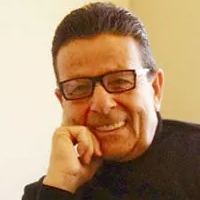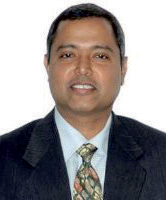
Mark Bezner
Owner & CEO
OLYMP
Born 11 March 1963, Mr. Mark Bezner, Owner & CEO of OLYMP, studied economic sciences (marketing/finance) at the Business School/University of California, Los Angeles/USA, graduating with magna cum laude honours in 1987. Mr. Bezner got his career start with Procter & Gamble (Bad Schwalbach) as a
Born 11 March 1963, Mr. Mark Bezner, Owner & CEO of OLYMP, studied economic sciences (marketing/finance) at the Business School/University of California, Los Angeles/USA, graduating with magna cum laude honours in 1987. Mr. Bezner got his career start with Procter & Gamble (Bad Schwalbach) as a
Fibre2Fashion: Fabric plays the most important role in design. OLYMP initially started out with military fabrics or parachute silk. How have things evolved over recent decades in terms of the fabrics used?
Mark Bezner:
Over the decades, we have, of course, continued to raise the demands we make on the fabrics and textiles used in relation to their properties. Today, we take excellent values in terms of smoothing characteristics, breathability, moisture absorption, tear and abrasion resistance, shrinkage tolerance or colourfastness for granted.
F2F: The ‘original Bezner collar’ was a successful innovation and differentiator in menswear. Would you like to share any of your latest/upcoming innovations in menswear design?
MB:
Another major accomplishment was no doubt the introduction of the non-iron and wrinkle-free, pure cotton business shirt range, the “OLYMP Luxor”, in 1996, which has since made and is continuing to make a significant contribution to positive company growth. In 2005, a second, slimmer cut was added with the “OLYMP Luxor slim line”. In addition, there’s the recent line, the “OLYMP Level Five body fit”, made from comfort-stretch fabric for the super slim, young and fashion conscious man, post 2008, and the “OLYMP Knitwear” range, where, as of autumn 2011, we have expanded our portfolio to include pullovers, slipover jumpers, cardigans and troyer style sweaters.
F2F: Olymp is a family run business. For years you have been excelling in this niche segment. How do you see prospects for growth without diversifying?
MB:
Concentrating on our core competences in the menswear segment was and no doubt still is one of the guaranteed success factors of the OLYMP brand. As a result of this consistent focus, we see ourselves in the advantageous position of being able to develop and manufacture with a high degree of precision our narrow, yet, for all that, significant product portfolio made up of business and leisure shirts, ties, polo shirts and, recently, knitwear too and thereby stand out from the competition. Sensible collection additions are, nevertheless, regularly possible within this spectrum. Hence we still see ample opportunities for diversification within specialisation.
F2F: Your designs have a touch of German style as well as a global appeal. How do you balance that?
MB:
OLYMP products are available today in over 40 countries. In consequence, our internationally oriented collection needs to cater for the various preferences in the clothing industry on a market wide basis. Likewise, with over 90 per cent self-created designs, we have succeeded in establishing a distinct, clearly recognisable range identity. F2F: The men’s apparel segment is comparatively less experimental. What do you feel? How can one innovate in formal dress wear? MB: Meeting the needs of our target group has always been the top priority when it comes to creating our collection. To that extent, there are natural limits imposed on any eagerness to experiment we might have. Fashion developments meanwhile provide us with sufficient scope to keep setting new trends. F2F: How do you see adaptability in men’s fashion? What works better with consumers: ready-to-wear or custom made? MB: With an increasing production volume of, at present, several million items annually, it is becoming clear that we need to be guided by the requirements of the market and, consequently, cannot meet every niche segment in men’s clothing simultaneously. Our range of goods extends, all the same, to countless colours, patterns and designs, different styles of cut, various shapes of collar and lengths of sleeve, as well as 17 sizes and special sizes all designed to accommodate individual needs as far as possible. F2F: How do you think consumers respond to the unexpected trends set on the catwalk! Do you get consumers asking for similar styling? MB: OLYMP sees itself clearly positioned in the mid market, where the creations of the catwalk usually don’t have an immediate impact. F2F: What trends we can expect for the upcoming season AW 2012? MB: The range of new colours from burgundy via red and orange to saffron, cranberry and skin tones will pervade the OLYMP collection. In combination with grey melanges, a warm and soft aesthetically appealing world is created. New to “OLYMP Level Five Knitwear” is an especially fine quality in 85 per cent merino wool with 15 per cent silk. The trimmer shape here clearly underlines the modern nature of the knitted garments. We have also launched a new accessories segment with our scarves. F2F: Menswear designs have a longer shelf life than women’s wear, don’t you think? MB: In both cases, there are classic designs, which are only subject to slight seasonal adjustments, and fashionable designs, which change rapidly and, accordingly, are only short lived. The key factor in my view is achieving the optimum balance between the two. F2F: How do you feel the fashion industry/trade has not only developed but also adapted as far as menswear being considered vital fashion is concerned? MB: The global textile and fashion market is subject to constant changes and the industry is facing worldwide competition which makes it more and more ambitious for brands to persist. F2F: Outside of Germany, where have you observed the major following of your company? Were you surprised by it? Why do you feel your collections got a following there? MB: The number of discerning “Men in OLYMP” is growing all the time, especially in neighbouring export markets such as Austria, Belgium, Denmark, France, Ireland, the Netherlands, Poland, Switzerland and the UK, along with Russia and China. This does not surprise us in the least, as all over the world there are people who attach great value to quality clothing. And this is precisely what OLYMP provides.
Gabi Seligsohn
Rahul Mehta
Rahul Mehta
Fanny Vermandel
Aseem Prakash
Pradip Mehta
Anurag Batra
Bill D’Arienzo
Arun Sirdeshmukh
Abhay Gupta


20230103183907.png)

_8.JPG)








